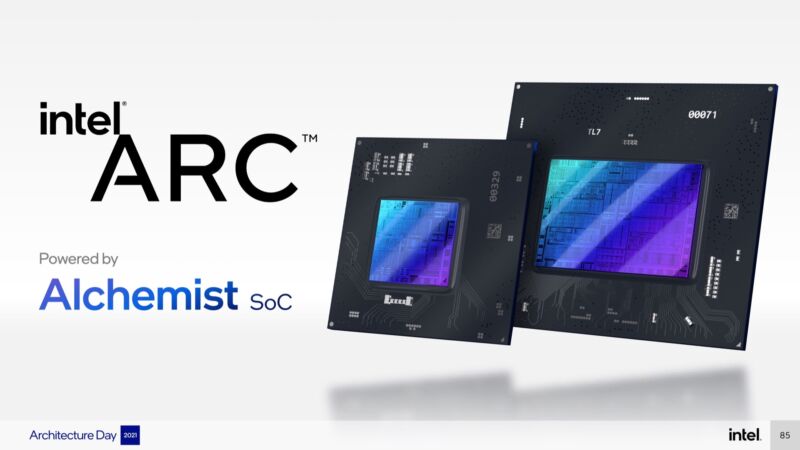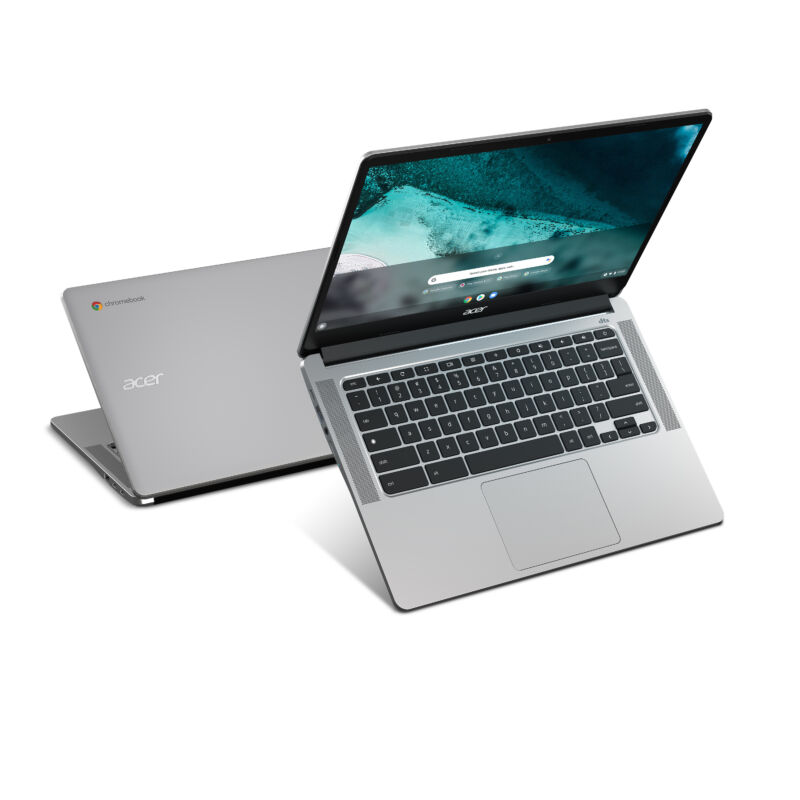
For AI, the uncontrolled environment is now the real test, and one that many models are failing.Read More

For AI, the uncontrolled environment is now the real test, and one that many models are failing.Read More

Enlarge / A simulation of a black hole merger. (credit: LIGO/Caltech/MIT/Sonoma State (Aurore Simonnet))
I was pretty excited when LIGO, the giant double-eared gravitational wave observatory in the US, detected the first gravitational waves. When Virgo came online, triangulating gravitational wave signals became possible, and gravitational wave astronomy became a reality.
Once the initial excitement of seeing individual events died away, it was only a matter of time and statistics before scientists started pulling new insights out of the data. A pair of new papers has looked at black hole merger statistics, and the papers’ results suggest that there might be something unusual in the distribution of black hole spins.
Gravitational waves are the result of mass moving through space and time. The mass stretches space and time, causing a ripple effect, much like the bow wave from a boat moving through water. And, just like a bow wave, the heavier and faster the mass, the bigger the wave. Unlike water, space-time is very stiff, so it needs more than an ocean liner to create a noticeable gravitational wave.

Enlarge / Servicemen of Russia’s Eastern Military District units attend a welcoming ceremony as they arrive in Belarus to take part in joint military exercises. Russia’s military is combining its own means of transport with train travel. (credit: Getty Images)
Hacktivists in Belarus said on Monday they had infected the network of the country’s state-run railroad system with ransomware and would provide the decryption key only if Belarus President Alexander Lukashenko stopped aiding Russian troops ahead of a possible invasion of Ukraine.
Referring to the Belarus Railway, a group calling itself Cyber Partisans wrote on Telegram:
BelZhD, at the command of the terrorist Lukashenko, these days allows the occupying troops to enter our land. As part of the “Peklo” cyber campaign, we encrypted the bulk of the servers, databases and workstations of the BelZhD in order to slow down and disrupt the operation of the road. The backups have been destroyed.
Dozens of databases have been cyberattacked, including AS-Sledd, AS-USOGDP, SAP, AC-Pred, pass.rw.by, uprava, IRC, etc.
Automation and security systems were deliberately NOT affected by a cyber attack in order to avoid emergency situations.
The group also announced the attack on Twitter.

Intel hasn’t said much about its upcoming Arc dedicated GPUs since announcing their branding and a handful of architectural details a few months ago, but recent leaks have given us some indications of what we can expect when it comes to performance and to the GPUs that Intel is planning for laptops later this year.
Of the leaks, the one about the laptop Arc models is more concrete. A slide originally leaked on Twitter outlines a total of five different GPU models for laptops, ranging from a couple of slow-but-better-than-integrated options at the bottom all the way to a potential high-end GeForce or Radeon competitor.
The best of the GPUs includes 512 of Intel’s GPU execution units (EUs) attached to 16 GB of 16 Gbps video memory using a 256-bit interface; that wide a memory interface and that much memory suggests a high-end GPU that’s trying to compete with GeForce 3070- and 3080-series and Radeon 6800- and 6900-series products. The middle two GPU options—one 384 EU model with 12 GB of RAM connected to a 192-bit interface and one 256 EU model with 8 GB of RAM and a 128-bit interface—are reminiscent of the specs for Nvidia’s mainstream RTX 3060 and 3050 laptop GPUs. The two low-end models, which connect to 4 GB of RAM with a 64-bit memory interface, seem poised to compete with GPUs like Nvidia’s GeForce MX series or the beefed-up RDNA2 integrated GPUs in AMD’s upcoming Ryzen 6000 laptop processors.

Enlarge (credit: Darren Hillman)
The transition to clean energy involves some markets where we have solutions that are no-brainers (more wind and solar, please) but also some head-scratchers. Maritime shipping falls in the latter category. Barring a return to sailing, these vessels will continue to require relatively high energy-density fuel to cheaply move goods over long distances. So how do we clean up an industry that runs on heavy fuel oil?
A new study led by Boris Stolz and Maximilian Held at ETH Zürich analyzes plausible options for the fleet of cargo ships that operate within Europe. Their idea was to take real shipping data from 2018 and calculate the impact of changing out each ship’s propulsion system. For ships carrying heavy loads, they set a benchmark of ditching no more than 3 percent of their cargo in order to install a potentially emissions-free propulsion system. From there, they found out how many voyages could still be completed—and at what cost.
The team evaluated hydrogen, ammonia, methane, methanol, and diesel—all made from renewable feedstock and using clean electricity. That includes sourcing the carbon for methane, methanol, or diesel from captured atmospheric CO2. They also considered internal combustion engines and two kinds of fuel cells (proton-exchange membrane or solid oxide) with electric motors for turning those fuels into motion. Lithium-ion batteries were included, as well.

The Dept. of Homeland Security reportedly warned of a potential for Russia to launch a cyberattack against the U.S. over Ukraine tensions.Read More

Meta claims that once it is fully functional, this will be the fastest operating supercomputer in the world.Read More

Enlarge / Acer Chromebook 314. (credit: Acer)
Acer is taking an interesting approach to durability with four Chromebooks it announced today. Specifically, the kid-focused laptops’ keyboards are designed to be hard to damage.
The Chromebook 512 (C852), Chromebook 511 (C734/C734T), Chromebook 314 (C934/C934T), and Chromebook Spin 311 (R722T/R723T) join Acer’s education-focused machines with keyboards featuring “mechanically anchored keys.” According to the company, that makes it difficult for users—especially curious young students—to rip keys out of the laptops, while still offering keyboards that are easy to repair or replace.

Diagram of the ridge. (credit: Acer)
An Acer spokesperson further explained the keyboard to Ars, saying that a ridge under each key makes it difficult for fingers to get under and pop it out.

Enlarge / FCC member Jessica Rosenworcel speaks during a Senate Commerce Committee oversight hearing on June 24, 2020, in Washington, DC. (credit: Getty Images | Jonathan Newton)
The Federal Communications Commission is on course to block some types of exclusive deals that ISPs and landlords use to prevent broadband competition in apartment buildings and other multiple-tenant environments.
A plan announced Friday by FCC Chairwoman Jessica Rosenworcel would “prohibit providers from entering into graduated revenue sharing agreements or exclusive revenue sharing agreements with a building owner; require providers to disclose to tenants in plain language the existence of exclusive marketing arrangements that they have with building owners; [and] end a practice that circumvents the FCC’s cable inside wiring rules by clarifying that existing Commission rules prohibit sale-and-leaseback arrangements that effectively block access to alternative providers,” the FCC said.
Rosenworcel circulated the proposal to other commissioners, meaning they can vote on it at any time. The updated rules would apply to residential buildings that contain apartments or condo units and to office buildings.

Enlarge / Russian mobile phone networks could be severely hampered if mooted US tech sanctions go into effect. (credit: Chris Ratcliffe/Bloomberg)
The US is considering restricting the flow of semiconductors into Russia to deter Russian President Vladimir Putin from invading Ukraine. The move would prevent the Russian military and much of the nation’s economy from advancing technologically.
The details of the sanctions are still being decided, but they would rely on similar restrictions that kneecapped Huawei, the Chinese tech company. Though most semiconductors are made overseas, US companies control huge swaths of the larger market, from chip design and manufacturing equipment to process and quality control. By restricting access to those companies’ products and services, the US can effectively limit Russian access to the latest chips, even if they’re made in other countries.
“It’s one of the tools that the US has come to prefer because it’s painful, but it doesn’t involve the use of force,” James Andrew Lewis, senior vice president and director of the Strategic Technologies Program at the Center for Strategic and International Studies, told Ars. “It sort of freezes Russia at a technological moment.”